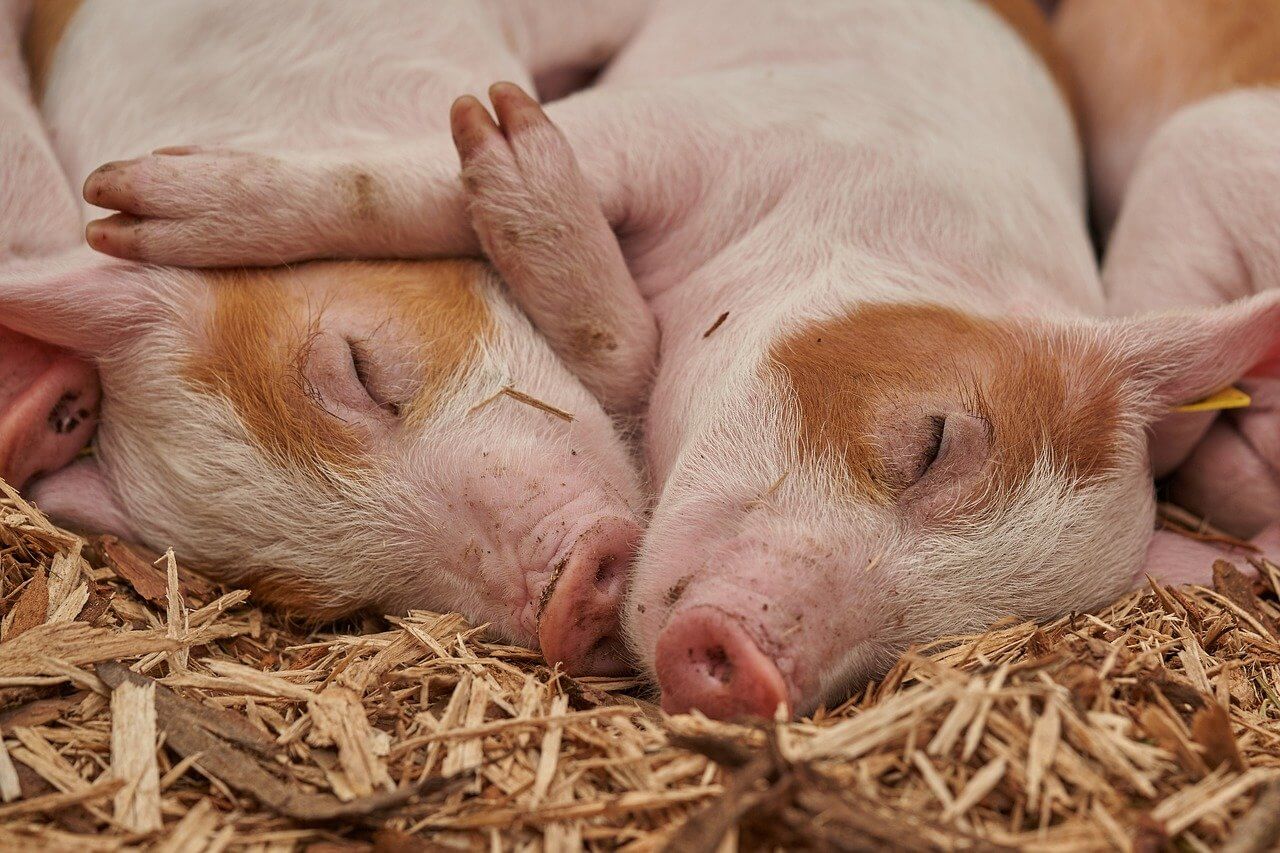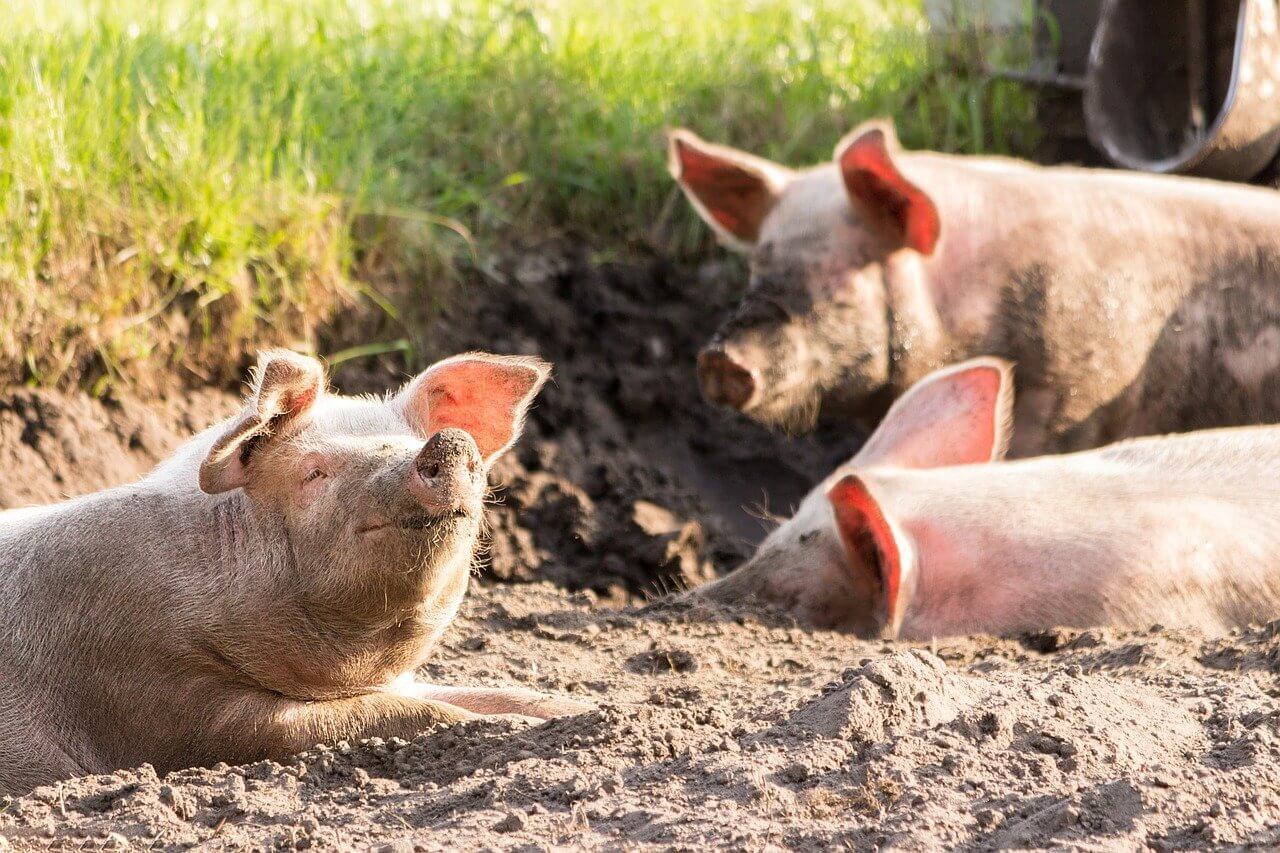Although most pigs raised for meat won’t ever need any hoof trimming, if you are raising a mini pig, pot-bellied pig, or even a pig for breeding purposes, knowing how to sedate a pig for hoof trim is essential. Sedation isn’t the only option to control a pig for hoof care but it tends to be one of the most reliable – here’s what you should know.
What You'll Learn Today
Hoof Trimming Basics

Pigs should have their hooves trimmed once a week to once a month, depending on the type of pig you have and your ultimate goals. If that sounds like way too often for you, consider the housing for your pigs.
Pigs that are kept on cement or pavers of some sort will require less hoof trimming, as will those who spend time walking and engaging in regular physical activity – they’re essentially filing down the hooves themselves. You can even just put pavers right in front of the door where your pig goes in and out.
Otherwise, hoof trimming is necessary to help ensure that your pigs can walk appropriately. Claw overgrowth can make rising difficult and affect the gait of your pig, putting unnecessary strain on his joints.
When you need to trim, start by soaking the hoof in water. This will soften the nail and hoof pad to make trimming easier. It will also allow you to thoroughly clean the feet of your pigs and to detect whether there is any inflammation or infection.
The ideal toe length is around 50 mm, but in some pigs, there can be one overgrown toe on the foot and one stunted toe. Do your best to match these but don’t worry if you can’t get it 100% perfect. Use a pair of nippers to reduce the length, working in several increments so you don’t cut too much and cause any pain or bleeding.
You will also need to straighten the dorsal wall of the toe. You can use an angle grinder or straighten it and to remove the excess wall horn beneath the area where buckling occurs.
The grinder can also be used to reduce the sole depth, since the outside claw is often more overgrown than the inside claw. If the heel is overgrown, you can remove tissue with the grinder or hoof knife. Don’t trim the heel flat to match the sole, as your pig needs this to absorb shock when it walks.
Finally, you may also need to trim the dewclaws. These are prone to injury and can impact the normal movement of a pig. Ideally, the dewclaw horn should be trimmed back to about 20 mm.
Pig Won’t Let Me Trim Hooves: Solutions to Consider

Although the steps above for hoof trimming seem simple enough, the reality is that handling a pig for hoof trimming, keeping it calm enough to handle without either of you getting hurt, is much more difficult than it seems. Here are some tips to try.
Flip the Pig
“Flip the pig” sounds aggressive but it’s a simple move that will help calm your pig and will make the working conditions for you much safer, too.
The basic theory behind this move is this – pigs do not like being on their backs or bottoms. This technique can be used instead of sedation to get your pig into a position for a hoof trim.
Your pig will probably scream and carry on while you’re getting it into this position, but don’t worry – you won’t be doing any harm.
Here’s a video that shows you exactly how to “flip the pig” for easy sedation and hoof trimming:
Start When Young
For the most part, pigs don’t need to have their hooves trimmed until they are around one year old. However, it’s a good idea to start working on their hooves when they are much younger.
That way, you can start practicing when your pigs are smaller and much easier to handle, and they will be able to get used to the practice without throwing a fit.
Try Treats
An easy way to entice your pigs to sit through medical care and grooming tasks like hoof trimming is to offer them treats. They won’t be able to pass up a delicious piece of biscuit or cake – and it may buy you enough time to get a little work done, too!
Work at Night and Block Them Off
The best time to trim a pig’s hooves is at night. As is the case with working with many other types of animals, working with pigs at night will allow you to work with an animal that is calm and relaxed.
Regardless of the time of day during which you choose to work, make sure you have a small area to work in – one that affords little opportunity for escape and chasing!
Have Kwik Stop on Hand
Whether you use sedation or not to trim your pig’s hooves, it’s a smart idea to keep Kwik Stop or some other kind of wound spray on hand. When you’re trimming, take only small cuts – otherwise, you risk drawing blood and injuring your pig. It’s best to leave a little too much horn than to take too much.
What Can I Use to Sedate A Pig?

Whenever possible, avoid sedating a pig. This can cause side effects and there is always a risk. If you decide to use a sedative to calm your pig for hoof trimming, always make sure your pig does not have any underlying conditions or injuries first.
There are three drugs that are commonly used in sedation – acetylpromazine (ACP), azaperone (Stresnil), and primidone (Mysoline). You will need a prescription from a vet, who will also let you know the appropriate dosage.
Most cause drowsiness, as you might expect, but some can also cause serious side effects like decreased respiratory rate, bradycardia, and hypotension.
Keep your pigs away from food for at least 12 hours before sedation (water is okay). Monitor your pig’s oxygen while it is sedated- ideally while using an oxygen mask. You will need to be very careful about monitoring your pig and having reversal drugs on hand – it is all too common for a farmer to sedate a pig, trim its hooves, and then check on it a short while later only to find it has passed away.
Sedation should only be used as a last resort. Try the methods listed above first. There is also a spray known as Rescue Remedy that you can use to calm an uneasy pig. It does not sedate but instead has a more holistic calming effect.
Can You Use Benadryl to Sedate a Pig?
Some people recommend OTC products to sedate pigs, like Benadryl or even melatonin. The problem is that they don’t necessarily help with anxiety and they don’t slow your pig’s reaction time, either. They just make her sleepy.
Not only that, but these medications can sometimes have the reverse effect and cause hyperactivity in a pig. If you’re going to sedate a pig, use the vet-recommended medications instead.
How Do You Sedate a Pig With Beer?
There are also some folks out there who recommend sedating a pig with beer. While your pig will probably appreciate a taste of your Old Milwaukee, you aren’t going to have much success in using it as a sedative.
Pigs are mean drunks! A pig’s digestive system is just like our own, but since they have excessive adipose tissue, the metabolism and breakdown of alcohol might be different for a pig. Plus, since it’s a known liver toxin, it can be dangerous to your pig if it has an underlying condition that you don’t know about.
Can You Tranquilize a Pig?
While a pig can be tranquilized, it’s not recommended by most vets for simple tasks like trimming hooves.
Sedatives and tranquilizers have serious side effects and require medical supervision. Because hooves need to be trimmed so often, it’s better to get your pigs used to the process when they’re young and to try alternative techniques (such as flip the pig) to keep your pig calm for this grooming routine.
I assure you, my 2 pigs are loved and very well taken care of, but I regret the day I chose to rescue these 2. The 450 pound female came to me at 3 months and was manageable as long as she did what she wanted. Destroyed very little around my well manicured property. When she was around 15 months, a small male pig needed a home and almost every Google article I’ve read/researched, stresses companionship while almost shaming single pig families. So what could it hurt?? Now 2 and a half years later, these 2 are NEVER allowed in my home, NOTHING is safe on my property unless it’s made of steel and can be tossed like a rag doll while not taking damage since the weight of any object made of steel is no match to those snouts. Why she waited for his arrival to then become a non stop 24/7 wrecking crew, I’ll never know except I do know it’s MY FAULT for not properly training these monsters and blah blah blah. So here’s my question, the 70 pound male has zero chance of penetration but will still shadow her 24/7 and “knock at her door” every single second that the 2 aren’t destroying everything in their paths, he’s laying on her backside and soaking her since he seems to need to release himself as many times as his gross little body can produce the sperm. Plus still finding the time to fertilize every pile of leaves I rake up or object/clothing I may leave outside in between his sessions with her. So being a gross male as I am, i still find him to be really nasty. Separating them doesn’t work since he will not stop attacking any barrier I put up that stands in his way of reattaching himself to her hip. He’s not hurting her but it bugs me to see my little 450 pound girl with this jerk and his constant nudging her and riding her.
We have a male pig, and we got him neutered. Before that he was acting just like your male. U gotta get him fixed asap!
We’ve tried the beer twice, it work but she still fought a little bit…we are wondering about Benadryl, how many of it do we give her? She around 250lbs., thanks
I need to know a safe way to sedate my pig to trim her nails…she won’t let me without feeding her treats n then only 2 nails are getting done…don’t want to hurt her just want to relax her enough to do her hoofs
I second Michelle’s comment on how to sedate my potbelly for nail trim. She weighs 123 LB. What can I use and how much will I need and where do I give the injection. Can I get the meds from a vet if I have not used this vet.
https://www.mohrmethodgroup.com/emily-mohr
https://www.instagram.com/emily_the_trimmer/?hl=en
https://m.facebook.com/emilythetrimmer/
This was the best thing that ever happened to me in the 9 years I have owned my pig. This woman travels to your home. She is a professional hoof trimmer. She is affordable and has a wealth of information to share from diet and behavioral issues to veterinary contacts. Your Welcome